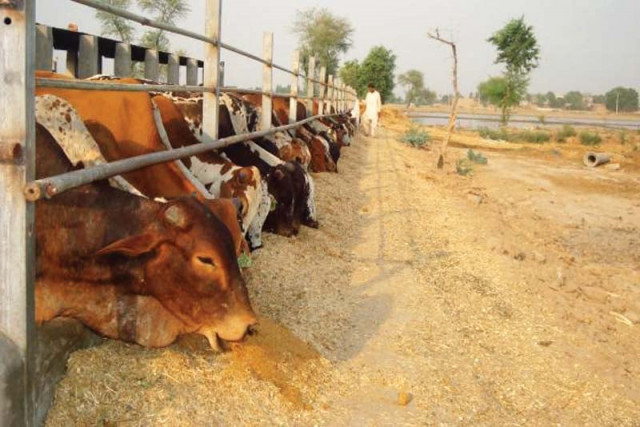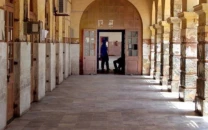Boosting output: In Punjab, special focus on livestock
Authorities have initiated several programmes to help farmers face challenges

Authorities have initiated several programmes to help farmers face challenges. PHOTO: FILE
Livestock plays an important role in the rural economy and employs a massive number of people. Millions of farmers herd cattle and manage to meet their daily needs. Punjab alone enjoys 49% share in total cattle strength of the country. The agriculture sector contributes about 21% to Pakistan’s GDP of which, the share of livestock sector is 56%.
Productivity of the livestock sector in Punjab has been comparatively low as compared to international markets in terms of meat and milk output. But the authorities have initiated several long- and short-term plans to help out the livestock farming community.
In recent years the livestock sector has developed manifolds with the initiation of new strategies like ‘Save Buffalo Calf Programme, Calf Fattening Programme, provision of poultry units, free vaccination against different diseases, registration of cattle farmers and their cattle and other initiatives.

“Such programmes have helped a great deal in enhancing meat and milk production,” Livestock District Officer Dr Sibtain Bhatti said.
While giving details of the Save Buffalo Calf Programme, he said Rs6,500 per buffalo was being offered as an incentive to registered cattle herders provided their animals gain 400 grams in weight per day.
The special focus on buffalo calf is meant to discourage the trend among farmers of neglecting male calves or selling them in the market while providing care to female calves that are raised for milk production. “This trend reduces the population of male calves,” Dr Sibtain explained.
Punjab Agriculture and Meat Company chief Mumtaz Khan Manais said at least 240 animals were registered with the district livestock department. The livestock department is planning to cover at least 5,000 calves under this programme.
Apart from this programme, the livestock department is also providing 600 poultry units to farmers on subsidised rates in the district to save chicken from extinction. Each poultry unit comprises five hens and one cockerel.
Dr Majid, the focal person on livestock, said the department provided 111 motorcycles to officials of livestock department in the district to improve their outreach to cattle herders. “And now they are going door to door to provide advisory services to the farmers,” he added.
He said the department had been able to control over 95% cattle diseases in the district. He pointed out the department introduced cold-chain for maintaining efficacy of vaccines in the province.
Similarly, disease diagnostic laboratories have also been set up to cure animals.
In rural areas, cattle are also the best source of meeting emergency expenditures. In case the crops get destroyed, cattle can be sold to meet sudden expenses. Milk production also enables farmers to have cash income on a daily basis.
Published in The Express Tribune, October 7th, 2016.



















COMMENTS
Comments are moderated and generally will be posted if they are on-topic and not abusive.
For more information, please see our Comments FAQ